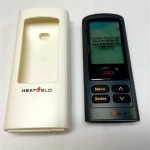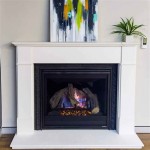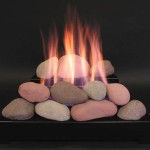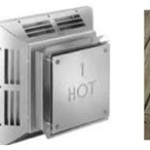Direct Vent Wood Fireplace Inserts: A Comprehensive Guide
Direct vent wood fireplace inserts offer a convenient and efficient way to heat your home while enjoying the ambiance of a real wood fire. These inserts are designed to fit into existing fireplaces, transforming them into modern, high-performance heating appliances. Unlike traditional fireplaces, direct vent inserts do not require a chimney. Instead, they vent directly through the wall or roof, creating a sealed system that ensures optimal combustion and heat transfer. This article provides a comprehensive guide to direct vent wood fireplace inserts, covering their benefits, considerations, and installation process.
Key Benefits of Direct Vent Wood Fireplace Inserts
Direct vent wood fireplace inserts offer a range of advantages over traditional fireplaces, making them a popular choice for homeowners seeking a more efficient and controlled heating solution. Here are some key benefits:
1. Improved Efficiency and Heat Output
Direct vent inserts are designed to maximize heat output and minimize heat loss. Their sealed combustion system ensures that more heat is transferred to the room, while the vent system removes smoke and gases efficiently. This results in a higher heating efficiency compared to traditional fireplaces, allowing you to heat your home more effectively with less wood.
2. Enhanced Safety and Performance
Direct vent inserts are equipped with safety features such as automatic shut-off valves and spark arrestors, reducing the risk of fire hazards. The sealed system also prevents smoke and carbon monoxide from entering the home, creating a healthier and safer environment.
3. Convenient Installation and Operation
Direct vent inserts can be installed into existing fireplaces without major structural modifications, making the process relatively straightforward. They also require less maintenance than traditional fireplaces, as they do not need regular chimney cleaning. The vent system can be easily installed through the wall or roof, providing flexibility for placement.
4. Enhanced Aesthetics and Ambience
Direct vent fireplace inserts come in a variety of styles and finishes, allowing you to choose an option that complements your home's decor. They can enhance the aesthetics of your fireplace, creating a warm and inviting atmosphere.
Considerations for Choosing a Direct Vent Wood Fireplace Insert
When selecting a direct vent wood fireplace insert, several factors should be considered to ensure a suitable and effective choice for your needs.
1. Heating Capacity and Size
The heating capacity of a direct vent insert is measured in BTUs (British thermal units). The appropriate size for your home depends on the square footage you need to heat and the climate you live in. A qualified professional can help determine the optimal heating capacity for your needs.
2. Fuel Efficiency and Wood Consumption
The fuel efficiency of a direct vent insert is measured by its combustion efficiency rating, which indicates the percentage of heat produced from the wood burned. Higher efficiency ratings translate to lower wood consumption and reduced heating costs. Look for models with a higher efficiency rating to maximize your savings.
3. Vent System and Placement
Direct vent inserts require a vented system, which can be installed through the wall or roof. Consider the location of your fireplace and the available vent paths when choosing a model. Consult with a professional to ensure proper installation and compliance with local building codes.
4. Aesthetics and Features
Consider the aesthetics of the insert and its features to ensure it complements your home's decor and meets your preferences. Some models offer additional features such as remote controls, programmable thermostats, or glass doors for enhanced functionality.
Installation Process for Direct Vent Wood Fireplace Inserts
The installation process for a direct vent wood fireplace insert typically involves the following steps, but always consult with a qualified professional for accurate guidance and adherence to local codes:
1. Site Preparation and Planning
The first step involves preparing the site for installation, including removing any existing fireplace accessories or obstructions. You'll need to determine the vent location and ensure it meets local building codes.
2. Installation of the Vent System
The vent system for the direct vent insert is installed through the wall or roof, connecting the insert to the exterior. The vent pipe should be properly insulated and sealed to prevent heat loss and ensure efficient ventilation.
3. Installation of the Insert
The insert is installed into the existing fireplace opening, ensuring a secure and airtight fit. This may involve making adjustments to the fireplace opening to accommodate the insert.
4. Final Connections and Testing
Once the insert is installed, the final connections are made, including the flue, vent pipe, and electrical wiring. The system is then tested to ensure proper functionality and ventilation.
Direct vent wood fireplace inserts provide an efficient, safe, and aesthetically pleasing way to heat your home. By considering the key benefits, considerations, and installation process, you can make an informed decision that meets your heating needs and enhances the comfort and ambiance of your living space.

25 Ruby Traditional Intellifire Touch Direct Vent Fireplace Insert Blower And Remote Electronic Ignition Majestic

Rushmore 30 Direct Vent Fireplace Insert Fine S Gas

Fireplace Insert Venting Demystified Gas Inserts

30 Ruby Contemporary Intellifire Touch Direct Vent Fireplace Insert Blower And Remote Electronic Ignition Majestic

White Mountain Hearth Rushmore Direct Vent Insert With Truflame Tech Fireplaces Usa

Majestic Ruby Series 30 Direct Vent Gas Insert Chadwicks S

Wood Burning Fireplace Inserts 1 Stove Insert Dealer

Why Choose A Fireplace Insert Made In America Xtrordinair

What Is A Direct Vent Fireplace Fireplaces Learning Center

Fireplace Insert Guide Fireplaces Direct Learning Center








